 |
Microprocessor, Bus interface unit, Data & instruction cache memory, ALU |
| << Develop your Personal Web Page: HTML |
| Number systems, binary numbers, NOT, AND, OR and XOR logic operations >> |

Introduction
to Computing CS101
VU
LESSON
7
Goals
for Today
Today
we want to learn about the
microprocessor, the key component, the brain, of a
computer
We'll
learn about the function of a
microprocessor
And
its various
sub-systems
Bus
interface unit
Data &
instruction cache
memory
Instruction
decoder
Arithmetic-Logic
unit
Floating-point
unit
Control
unit
7.1
Microprocessor
A
microprocessor (abbreviated as µP
or uP) is a computer
processor on a microchip. It's
sometimes
called
a logic
chip. A microprocessor
is designed to perform arithmetic and
logic operations that
make
use
of small number-holding areas
called registers.
Typical microprocessor operations include
adding,
subtracting,
comparing two numbers, and
fetching numbers from one
area to another. These operations
are
the result of a set of instructions
that are part of the microprocessor
design. When the computer is
turned
on, the microprocessor is designed to get the first
instruction from the basic
input/output system
(BIOS)
that comes with the computer as
part of its memory. After
that, either the BIOS, or the
operating
system
that BIOS loads into computer
memory, or an application program is
"driving" the
microprocessor,
giving it instructions to
perform.
The
number of transistors available has a
huge effect on the performance of a processor. As
seen earlier,
a
typical instruction in a processor
like an 8088 took 15 clock
cycles to execute. Because of the
design
of the
multiplier, it took approximately 80
cycles just to do one 16-bit
multiplication on the 8088.
With
more transistors,
much more powerful multipliers
capable of single-cycle speeds
become possible.
A
microprocessor is made from
miniaturized transistors and other
circuit elements on a
single
semiconductor
integrated circuit (IC) .
These are made up oof
semiconductor and silicon.
7.2
Integrated Circuits
A chip
is
also called an (integrated
circuit (IC) (aka microchip
or
just chip). It is a
microelectronic
semiconductor
device consisting of many interconnected
transistors and other
components.Generally it
is a
small, thin piece of silicon
onto which the transistors
making up the microprocessor have
been
etched.
A
chip might be as large as an
inch on a side and can
contain tens of millions of transistors.
Simpler
processors
might consist of a few thousand
transistors etched onto a
chip just a few millimeters
square.
Integrated
circuits can be classified
into analog, digital and
mixed signal (both analog
and digital on the
same
chip). Digital integrated
circuits can contain
anything from one to millions of
logic gates, flip-
flops,
multiplexers,
etc.
in a few square millimeters.
The small size of these
circuits allows high
speed,
low
power dissipation, and reduced
manufacturing cost compared
with board-level
integration.
The
growth of complexity of integrated
circuits follows a trend
called "Moore's Law", it
states that the
number of
transistors in an integrated circuit
doubles every two years.
Integrated circuits can
be
classified
into analog, digital
and
mixed
signal (both
analog and digital on the same
chip). Digital
integrated
circuits can contain
anything from one to millions of
logic gates, flip-flops,
multiplexers, etc.
in a
few square millimeters. The
small size of these circuits
allows high speed, low
power dissipation,
and
reduced manufacturing cost
compared with board-level
integration.
24
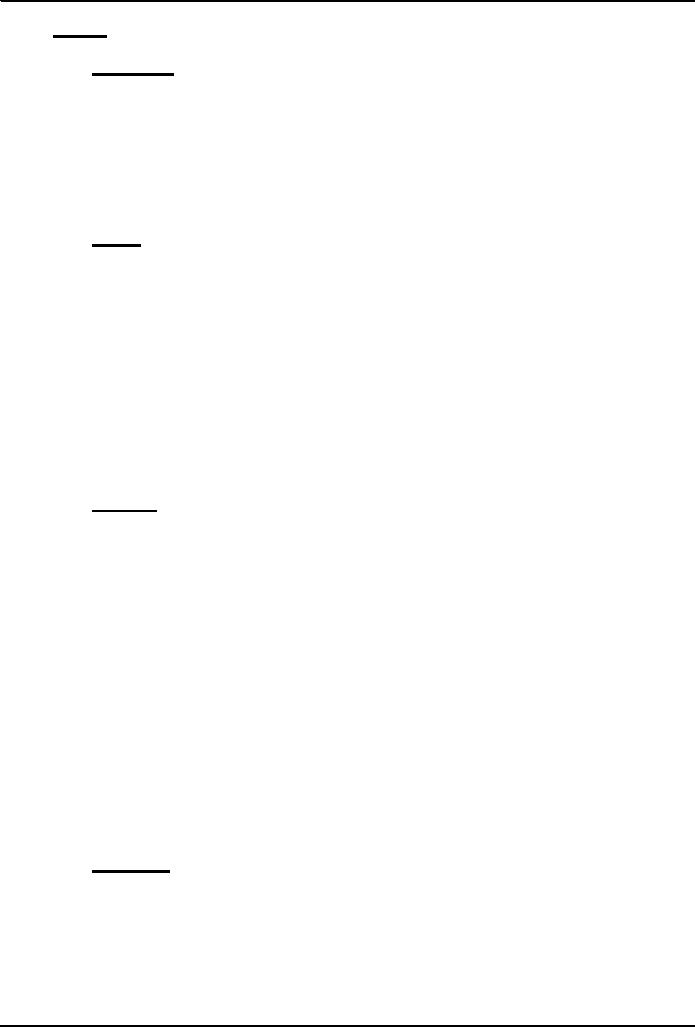
Introduction
to Computing CS101
VU
7.3
Devices
7.3.1
Transistors
The
transistor
is a
solid state semiconductor device
used for amplification and
switching, and has three
terminals.
A small current or voltage
applied to one terminal controls the
current through the other
two,
hence
the term transistor;
a voltage- or current-controlled resistor. It is the
key component in all modern
electronics. In
digital circuits, transistors
are used as very fast
electrical switches, and
arrangements of
transistors
can function as logic gates,
RAM-type memory and other devices. In
analog circuits,
transistors
are essentially used as
amplifiers.
7.3.2
Diodes
A diode
functions
as the electronic version of a one-way
valve. By restricting the direction
of
movement of
charge carriers, it allows an electric
current to flow in one direction, but
blocks it in the
opposite
direction.
A diode's
current-voltage, or I-V, characteristic
can be approximated by two regions of
operation.
Below
a certain difference in potential between
the two leads, the diode can
be thought of as an open
(non-conductive)
circuit. As the potential difference is
increased, at some stage the
diode will become
conductive
and allow current to flow,
at which point it can be
thought of as a connection with
zero (or at
least
very low) resistance. In a
typical semiconductor p-n diode,
conventional current can
flow from the
p-doped
side to the n-doped side, but
not in the opposite direction.
When the diode is reverse-biased,
the
charge
carriers are pulled away
from the center of the device,
creating a depletion region.
More
specifically,
the transfer function is logarithmic, but
so sharp that it looks like
a corner.
7.3.3
Resistors
A resistor is an
electrical component designed to have an electrical
resistance that is independent of
the
current
flowing through it. The
common type of resistor is also designed to be
independent of
temperature and
other factors. Resistors may be
fixed or variable. Variable
resistors are also
called
potentiometers
or rheostats
A few
resistor types
Some
resistors are long and thin,
with the actual resisting material in the
centre, and a conducting metal
leg
on each end. This is called an
axial
package.
Resistors
used in computers and other
devices are typically much
smaller, often in surface-mount
(Surface-mount
technology) packages without
leads.
Larger
power resistors come in more
sturdy packages designed to dissipate
heat efficiently, but they
are
all
basically the same structure. Resistors
are used as part of
electrical networks and incorporated
into
microelectronic
semiconductor devices. The critical
measurement of a resistor is its resistance,
which
serves
as a ratio of voltage to current and is
measured in ohms, an SI unit. Any
physical object is a
kind
of resistor.
Most metals are conductors,
and have low resistance to the
flow of electricity. The
human
body,
a piece of plastic, or even a vacuum has a
resistance that can be
measured. Materials that
have
very
high resistance are called
insulators.
7.3.4
Capacitors
A capacitor
(historically known as a "condenser") is
a device that stores energy
in an electric field, by
accumulating
an internal imbalance of electric charge.
An ideal capacitor can store
electronic energy
when
disconnected from its charging
circuit, so it can be used
like a fast battery. In AC or signal
circuits
it
induces a phase difference of 90
degrees, current leading
potential.
They
are connected in parallel
with the power circuits of
most electronic devices and
larger systems
(such
as factories) to shunt away and
conceal current fluctuations from the
primary power source
to
25

Introduction
to Computing CS101
VU
provide
a "clean" power supply for
signal or control circuits.
The effect of such
capacitors can be
thought
of in two different ways. One
way of thinking about it is
that the capacitors act as a
local
reserve
for the DC power source, to smooth
out fluctuations by charging and
discharging each
cycle.
The
other way to think about it
is that the capacitor and resistance of the
power supply circuitry acts
as a
filter
and removes high frequencies, leaving
only DC.
Wires
And
are made of the following
materials
Silicon
- semiconductor
Copper
- conductor
Silicon
Dioxide insulator
7.4
Microprocessor system
Microprocessors
are powerful pieces of hardware,
but not much useful on
their own. They do not
have
the
sense of their own. Like the
human sample it needs some
instructions inputs and outputs to
process
some
task. As per instruction given to the
microprocessor.
A
microprocessor system is microprocessor
plus all the components it requires to do
a certain task.
Shortly,
a microprocessor needs help of
some components to make up the task to
fulfill. These
components
are input, output, storage,
and memory. All these components and
microprocessor make up
a
microprocessor system.
Personal
Computer is an example of microprocessor
System. Another example is the
microcontroller.
7.5
Micro-controllers
A
microcontroller is a microprocessor
optimised to be used to control
electronic equipment.
Microcontrollers
represent the vast majority of
all computer chips sold, over
50% are "simple"
controllers,
and another 20% are more specialized
decipline processors. While
you may have one or
two
general-purpose
microprocessors in your house
(you're using one to read
this), you likely
have
somewhere
between one and two dozen
microcontrollers. They can be
found in almost any
electrical
device,
washing machines, microwave ovens,
telephones etc.
A
microcontroller includes CPU,
memory for the program
(ROM), memory for data
(RAM), I/O lines to
communicate
with peripherals and complementary
resources, all this in a
closed chip. A
microcontroller
differs
from a standalone CPU, because
the first one generally is
quite easy to make into a
working
computer,
with a minimum of external support chips.
The idea is that the
microcontroller will be placed
in the
device to control, hooked up to
power and any information it
needs, and that's
that.
7.5
The Main Memory
Bottleneck
Modern
super-fast microprocessors can
process a huge amount of data in a short
duration. They need
data
to be processed at the same speed.
Other wise they have to sit
idle and wait for the
input/data,
because
speed of input is rather small
then processing of data. They
require quick access to data
to
maximize
their performance. If they don't
receive the data that they
require, they literally stop
and wait,
this
results in reduced performance and wasted
power.
Current
microprocessors can process an
instruction in about ns (nanosecond).
Time required for
fetching
data from main memory
(RAM) is of the order of 100
ns
26
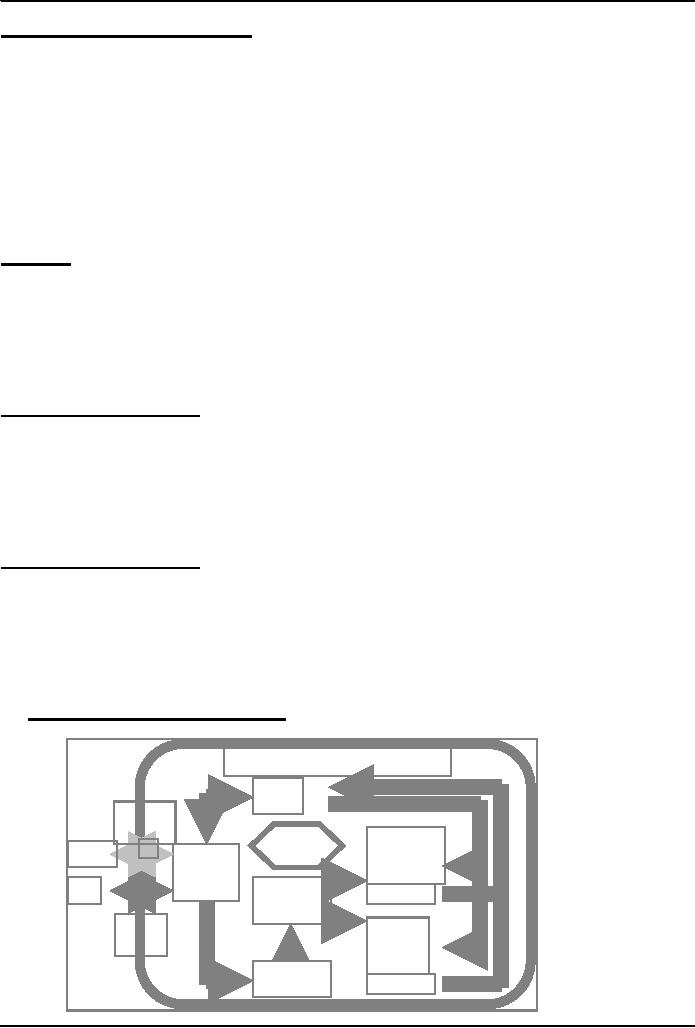
Introduction
to Computing CS101
VU
Solution to
the Bottleneck
Problem
In
order to eliminate the solution it
was suggested to make the
main memory faster. But that
evolved a
problem
that the 1-ns memory is
extremely expensive as compared the
currently popular 100-ns
memory.
Finally
it was decided that in addition to the
relatively slow main memory,
put a small amount of
ultra-
fast RAM
right next to the microprocessor on the
same chip and make sure
that frequently used data
and
instructions
resides in that ultra-fast
memory
It
increases the performance. It supports
better over performance due to fast
access to frequently
used
data
and instructions.
7.7
Cache
A cache
is a
collection of duplicate data, where the
original data is expensive to
fetch or compute
(usually
in terms of access time)
relative to the cache. Future
accesses to the data can be
made by
accessing
the cached copy rather than
refetching or recomputing the original
data, so that the perceived
average
access time is lower. Caches
may mark the cached data as
'stale' when the original
data is
changed,
but this is not always the
case.
On-Chip
Cache Memory (1)
That
small amount of memory located on the
same chip as the microprocessor is
called On-Chip Cache
Memory.
The
microprocessor stores a copy of
frequently used data and
instructions in its cache
memory. When
the
microprocessor desires to look at a piece
of data, it checks in the cache
first. If it is not there,
only
then
the microprocessor asks for the
same from the main
memory
On-Chip
Cache Memory (2)
L2,
cache memory, which is on a
separate chip from the
microprocessor but faster to access
than regular
RAM.
It is the
small size and proximity to the
microprocessor makes access times short,
resulting in a boost in
performance.
Microprocessors predict what data
will be required for future
calculations and it pre-
fetches
that data and places it in
the cache so that it is available
immediately when the need
arises.
7.8
Microprocessors Building
Blocks
Microprocessor
Data
Cache
Memory
Bus
Arithmetic
Control
RAM
&
Logic
Bus
Unit
Unit
Interface
Unit
I/O
Instruction
Registers
Decoder
System
Floating
Bus
Point
Unit
Instruction
Cache
Registers
27
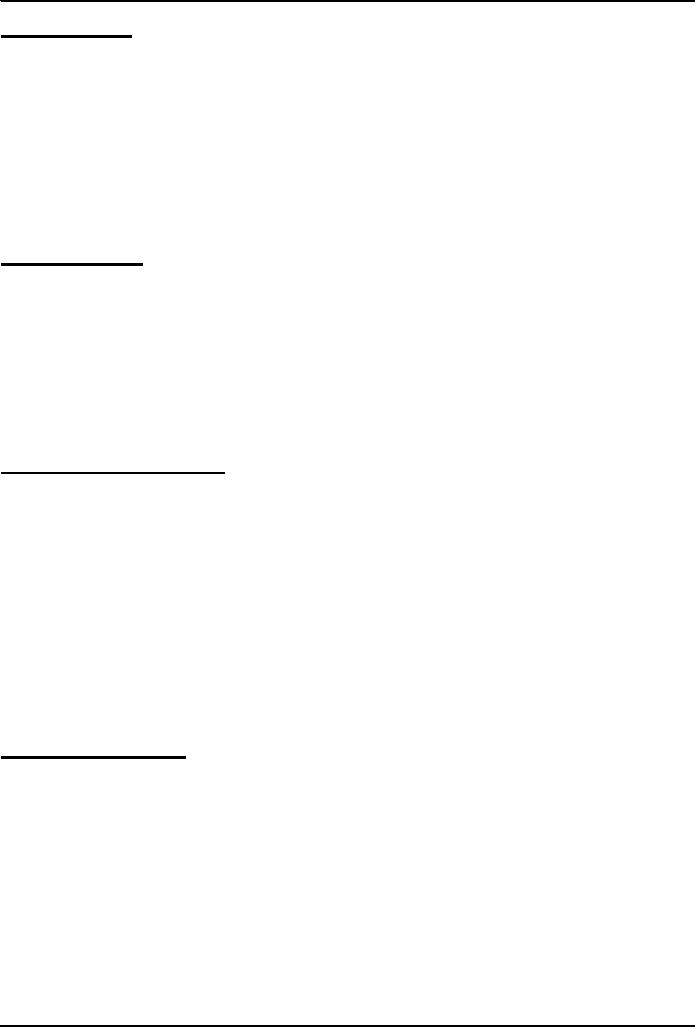
Introduction
to Computing CS101
VU
Bus
Interface Unit
The
bus interface unit is the
part of the processor that interfaces
with the rest of the PC. Its
name comes
from
the fact that it deals with
moving information over the
processor data bus, the
primary conduit for
the transfer of
information to and from the CPU.
The bus interface unit is
responsible for responding to
all
signals that go to the processor, and
generating all signals that go
from the processor to other
parts of
the
system.
It
receives instructions & data
from main memory to be
processed and operations. After the
operations
are
processed it then sends back the
information (processed data) to the
cache. It also receives
the
processed
data to send it to the main
memory.
Instruction
Decoder
The
instruction
decoder of a
processor is a combinatorial circuit
sometimes in the form of a
read-only
memory,
sometimes in the form of an ordinary
combinatorial circuit. Its
purpose is to translate an
instruction
code into the address in the
micro memory where the micro
code for the instruction
starts.
A decoder
is a
device which is the reverse,
undoing the encoding so that the
original information can
be
retrieved.
The same method used to
encode is usually just
reversed in order to decode.This unit
receives
the
programming instructions and decodes them
into a form that is understandable by the
processing
units,
i.e. The ALU or FPU Then, it
passes on the decoded instruction to the
ALU or FPUs as desired.
Arithmetic
& Logic Unit (ALU)
An
arithmetic and logical unit
(ALU)
also
known as "Integer
Unit" is one of the
core components of
all
central processing units. It is
capable of calculating the results of a
wide variety of common
computations.
The most common available operations
are the integer arithmetic operations of
addition,
subtraction,
and multiplication, the bitwise logic
operations of AND, NOT, OR, and XOR, and
various
shift
operations.
The
ALU takes as inputs the data to be
operated on and a code from the
control unit indicating
which
operation
to perform, and for output
provides the result of the computation.
In some designs it may
also
take
as input and output a set of
condition codes, which can
be used to indicate cases
such as carry-in or
carry-out,
overflow, or other
statuses.
The
new breed of popular microprocessors have
not one but two almost
identical ALU's that can
do
calculations
simultaneously, doubling the
capability
Floating-Point
Unit (FPU)
A floating
point unit (FPU) is a
part of a CPU specially designed to
carry out operations on
floating
point
numbers. Typical operations are
floating point arithmetic
(such as addition and multiplication),
but
some
systems may be capable of performing
exponential or trigonometric calculations
as well (such as
square
roots or cosines).
Not
all CPUs have a dedicated FPU. In the
absence of an FPU, the CPU
may use a microcode
program
to emulate an
FPUs function using an
arithmetic and logical unit
(ALU), which saves the
added
hardware
cost of an FPU but is
significantly slower.
In
some computer architectures, floating
point operations are handled
completely separate from
integer
operations,
with dedicated floating point
registers and independent clocking
schemes. Floating
point
addition
and multiplication operations are
typically pipelined, but more
complicated operations, like
division,
may not be, and
some systems may even have a dedicated
floating point divider
circuit.
28
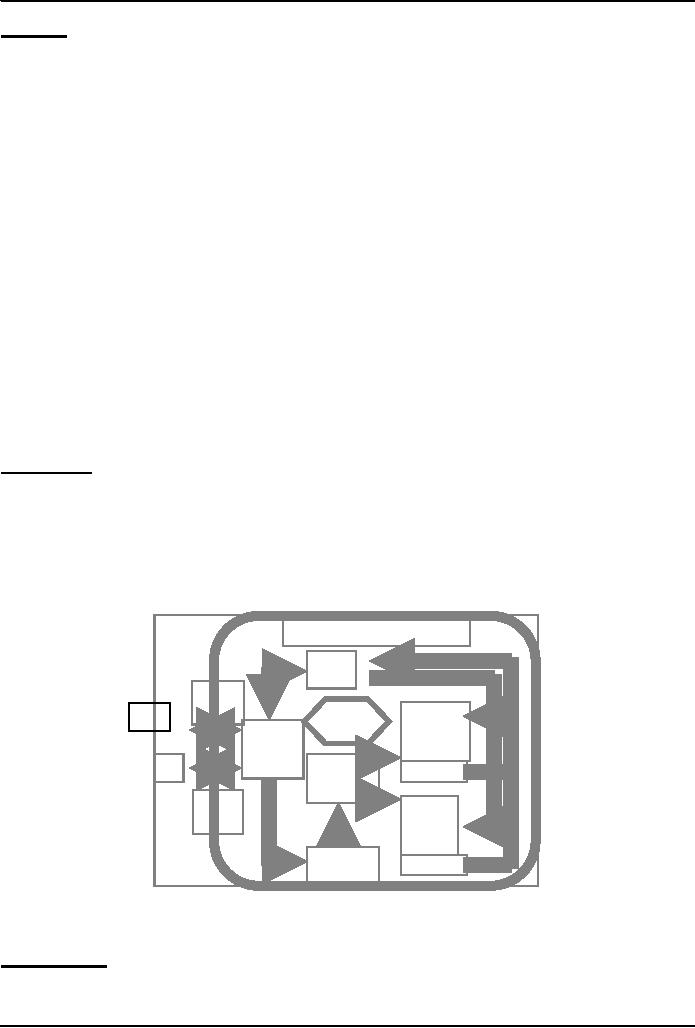
Introduction
to Computing CS101
VU
Registers
A register
is a
device for storing data. It is a
small amount of very fast computer memory
used to speed
the
execution of computer programs by
providing quick access to
commonly used values.
These
registers
are the top of the memory
hierarchy, and are the
fastest way for the system
to manipulate data.
It is common to
measure registers by the number of bits
it can hold, for example, an
"8-bit register" or
"32-bit
register". Registers are now
usually implemented as an array of
SRAMs, but they have also
been
implemented
using individual flip flops,
high speed core memory,
thin film memory, and other
ways in
various
machines.
There
are several other classes of
registers:
Data
registers are
used to store integer
numbers.
Address
registers hold
memory addresses and are
used to access
memory.
General
Purpose registers can
store both data and
addresses.
Floating
Point registers are
used to store floating point
numbers.
Constant
registers hold
read-only values (e.g zero or
one).
Vector
registers hold
data for Single Instruction
Multiple Data (SIMD)
instructions.
Special
Purpose registers which
store internal CPU data
like the stack pointer or
processor status
words.
The
ALU & FPU store intermediate and
final results from their
calculations in these registers. Then
the
processed
data goes back to the data
cache and then to main
memory from these
registers.
Control
Unit
A
control unit is the part of a
CPU or other device that
directs its operation. The outputs of the
unit
control
the activity of the rest of the device. A
control unit can be thought
of as a finite state machine. It
is
called the brain of computer
microprcessor. It manages whole
process of the microprocessor. For
it
identifes
which data is sent to the ALU or
memory etc.
At one
time control units for
CPUs were ad-hoc logic, and they were
difficult to design. Now they
are
often
implemented as a microprogram that is
stored in a control
store.
Microprocessor
Data
Cache
Memory
Bus
Arithmetic
RAM
Control
&
Logic
Bus
Unit
Unit
Interface
Unit
Instruction
I/O
Registers
Decoder
System
Floating
Bus
Point
Unit
Instruction
Registers
Cache
That
was the structure, now let's
talk about the language of a
microprocessor
Instruction
Set
The
set of machine instructions that a
microprocessor recognizes and can
execute the only language
microprocessor
knows
29
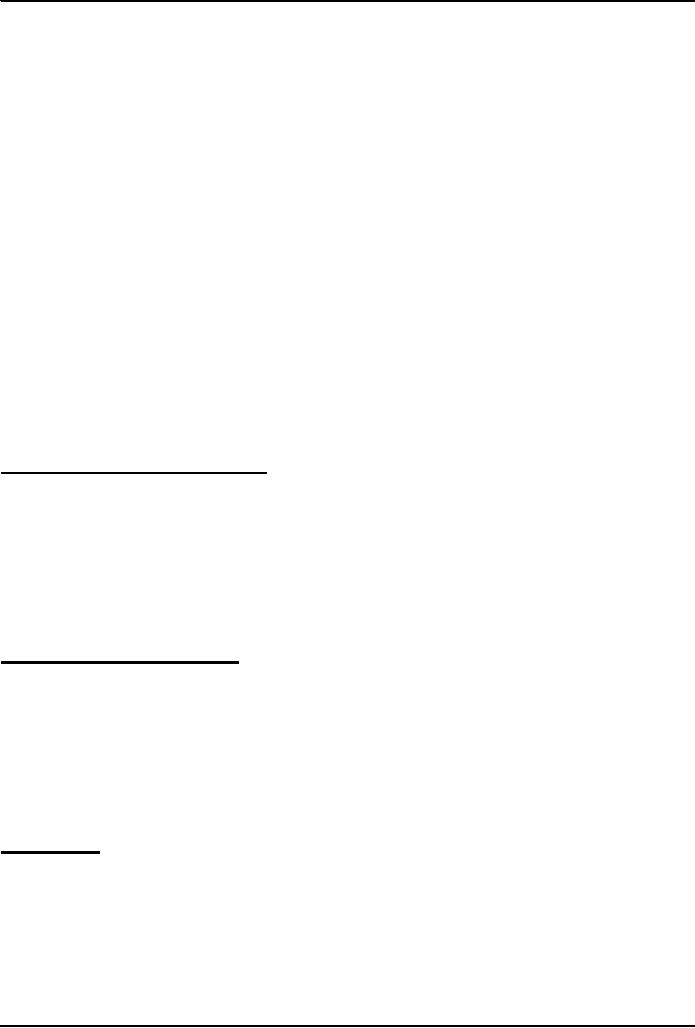
Introduction
to Computing CS101
VU
An
instruction set includes
low-level, a single step-at-a-time
instructions, such as add,
subtract,
multiply,
and divide
Each
microprocessor family has
its unique instruction
set
Bigger
instruction-sets mean more complex chips
(higher costs, reduced
efficiency), but shorter
programs
An instruction
set, or
instruction set architecture (ISA), is a
specification detailing the commands
that a
computer's
CPU should be able to understand and
execute, or the set of all commands
implemented by a
particular
CPU design. The term describes the
aspects of a computer or microprocessor
typically visible
to a programmer,
including the native datatypes,
instructions, registers, memory
architecture, interrupt
and
fault system, and external
I/O (if any). "Instruction
set architecture" is sometimes
used to
distinguish
this set of characteristics
from the Micro-Architecture, which
are the elements and
techniques
used to implement the ISA, e.g.
microcode, pipelining, cache systems,
etc. Bigger
instruction-sets
mean more complex chips (higher
costs, reduced efficiency),
but shorter programs. Each
microprocessor
family has its unique
instruction set. Following
are the few ISA;
MIPS
Motorola
6800
ARM
PowerPC
x86
(Pentium)
ALGOL
Object Code
SPARC
7.9The
1st microprocessor :
Intel 4004
The
first microprocessor was the
Intel 4004, introduced in
1971. The 4004 was
not very powerful all
it
could
do was add and subtract, and it could
only do that 4 bits at a
time. But it was amazing
that
everything
was on one chip. Prior to the
4004, engineers built
computers either from
collections of chips
or
from discrete components (transistors
wired one at a time). The
4004 powered one of the
first
portable
electronic calculators. It was as
powerful as ENIAC which had
18000 tubes and occupied a
large
room. It cost less then
$100. Its targeted use was
of calculation. It consisted of 2250
transistors and
16pins.
Speed was 108 kHz,
60,000 ops/sec.
Why
Intel came up with the
idea?
A
Japanese calculator manufacturer, Busicom
wanted Intel to develop 16
separate IC's for a line of
new
calculators.
Intel, at that point in time
known only as a memory manufacturer,
was quite small and
did
not
have the resources to do all 16 chips.
Then Ted Hoff came up
with the idea of doing all
16 on a
single
chip. Later, Intel realized
that the 4004 could have
other uses as well.
Currently
Intel came with Intel
Pentium 4 (2.2GHz).
It
was introduced in December
2001. It got 55 million transistors.
32-bit word size. Within the
processor
it
has 2 ALU's each working at
4.4GHz. It costs around
$600.
Moore's
Law
Moore's
law(1965) is an
empirical observation stating in
effect that at our rate of
technological
development
and advances in the semiconductor industry the
complexity of integrated circuits
doubles
every
18 months. His original empirical
observation was that the number of
components on
semiconductor
chips with lowest per-component cost
doubles roughly every 12 months, and
he
conjectured
that the trend will stay
for at least 10 years. In
1975, Moore revised his
estimate for the
expected
doubling time, arguing that
it was slowing down to about
two years
30
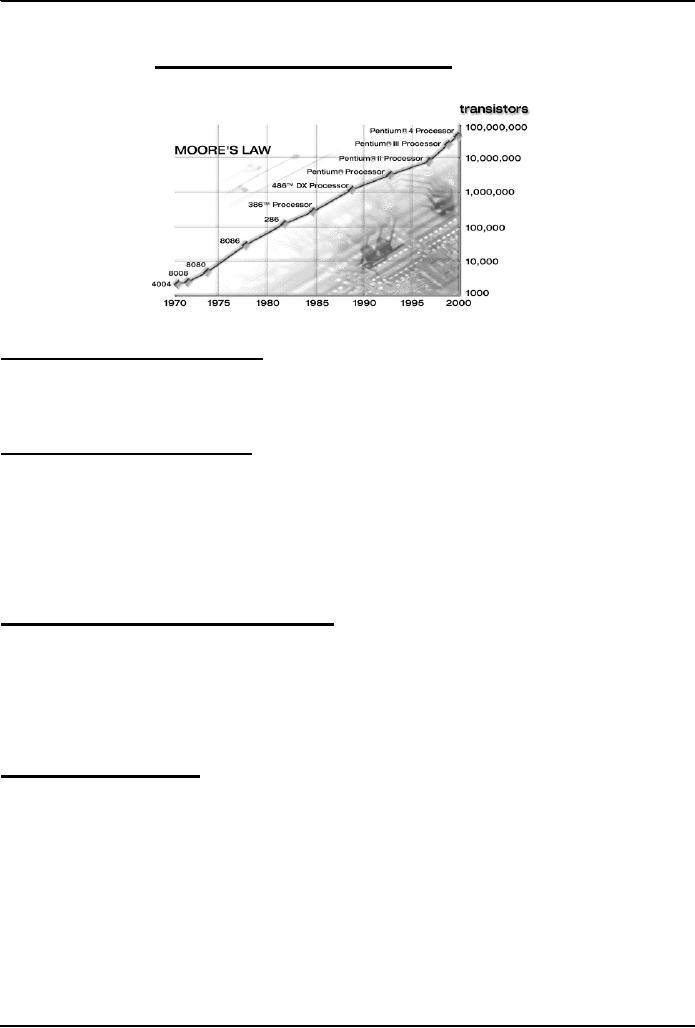
Introduction
to Computing CS101
VU
Evolution of
Intel Microprocessors
4-,
8-, 16-, 32-, 64-bit
(Word Length)
The
4004 dealt with data in
chunks of 4-bits at a time
Pentium
4 deals with data in chunks
(words) of 32-bit
length
The
new Itanium processor deals
with 64-bit chunks (words) at a
time
kHz,
MHz, GHz (Clock
Frequency)
4004
worked at a clock frequency of
108kHz
The
latest processors have clock freqs. in
GHz
Out
of 2 microprocessors having similar
designs, one with higher
clock frequency will be
more
powerful
Same
is not true for 2
microprocessors of dissimilar designs.
Example: Out of PowerPC &
Pentium 4
microprocessors
working at the same freq, the
former performs better due to superior
design. Same for
the
Athlon microprocessor when
compared with a
Pentium
Enhancing
the capability of a microprocessor
?
The
computing capability of a microprocessor
can be enhanced in many
different ways:
By increasing the
clock frequency
By increasing the
word-width
By
having a more effective caching algorithm
and the right cache
size
By
adding more functional units (e.g.
ALU's, FPU's, Vector/SIMD
units, etc.)
Improving
the architecture
What
have we learnt
today?
Today
we learnt about the microprocessor, the
key component, the brain, of a
computer
We
learnt about the function of a
microprocessor
And
its various
sub-systems
Bus
interface unit
Data &
instruction cache
memory
Instruction
decoder
ALU
Floating-point
unit
Control
unit
31
Table of Contents:
- INTRODUCTION
- EVOLUTION OF COMPUTING
- World Wide Web, Web’s structure, genesis, its evolution
- Types of Computers, Components, Parts of Computers
- List of Parts of Computers
- Develop your Personal Web Page: HTML
- Microprocessor, Bus interface unit, Data & instruction cache memory, ALU
- Number systems, binary numbers, NOT, AND, OR and XOR logic operations
- structure of HTML tags, types of lists in web development
- COMPUTER SOFTWARE: Operating Systems, Device Drivers, Trialware
- Operating System: functions, components, types of operating systems
- Forms on Web pages, Components of Forms, building interactive Forms
- APPLICATION SOFTWARE: Scientific, engineering, graphics, Business, Productivity, Entertainment, Educational Software
- WORD PROCESSING: Common functions of word processors, desktop publishing
- Interactivity to Forms, JavaScript, server-side scripts
- ALGORITHMS
- ALGORITHMS: Pseudo code, Flowcharts
- JavaScript and client-side scripting, objects in JavaScript
- Low, High-Level, interpreted, compiled, structured & object-oriented programming languages
- Software Design and Development Methodologies
- DATA TYPES & OPERATORS
- SPREADSHEETS
- FLOW CONTROL & LOOPS
- DESIGN HEURISTICS. Rule of thumb learned through trial & error
- WEB DESIGN FOR USABILITY
- ARRAYS
- COMPUTER NETWORKS: types of networks, networking topologies and protocols
- THE INTERNET
- Variables: Local and Global Variables
- Internet Services: FTP, Telnet, Web, eMail, Instant messaging, VoIP
- DEVELOPING PRESENTATIONS: Effective Multimedia Presentations
- Event Handlers
- GRAPHICS & ANIMATION
- INTELLIGENT SYSTEMS: techniques for designing Artificial Intelligent Systems
- Mathematical Functions in JavaScript
- DATA MANAGEMENT
- DATABASE SOFTWARE: Data Security, Data Integrity, Integrity, Accessibility, DBMS
- String Manipulations:
- CYBER CRIME
- Social Implications of Computing
- IMAGES & ANIMATION
- THE COMPUTING PROFESSION
- THE FUTURE OF COMPUTING
- PROGRAMMING METHODOLOGY
- REVIEW & WRAP-UP of Introduction to Computing